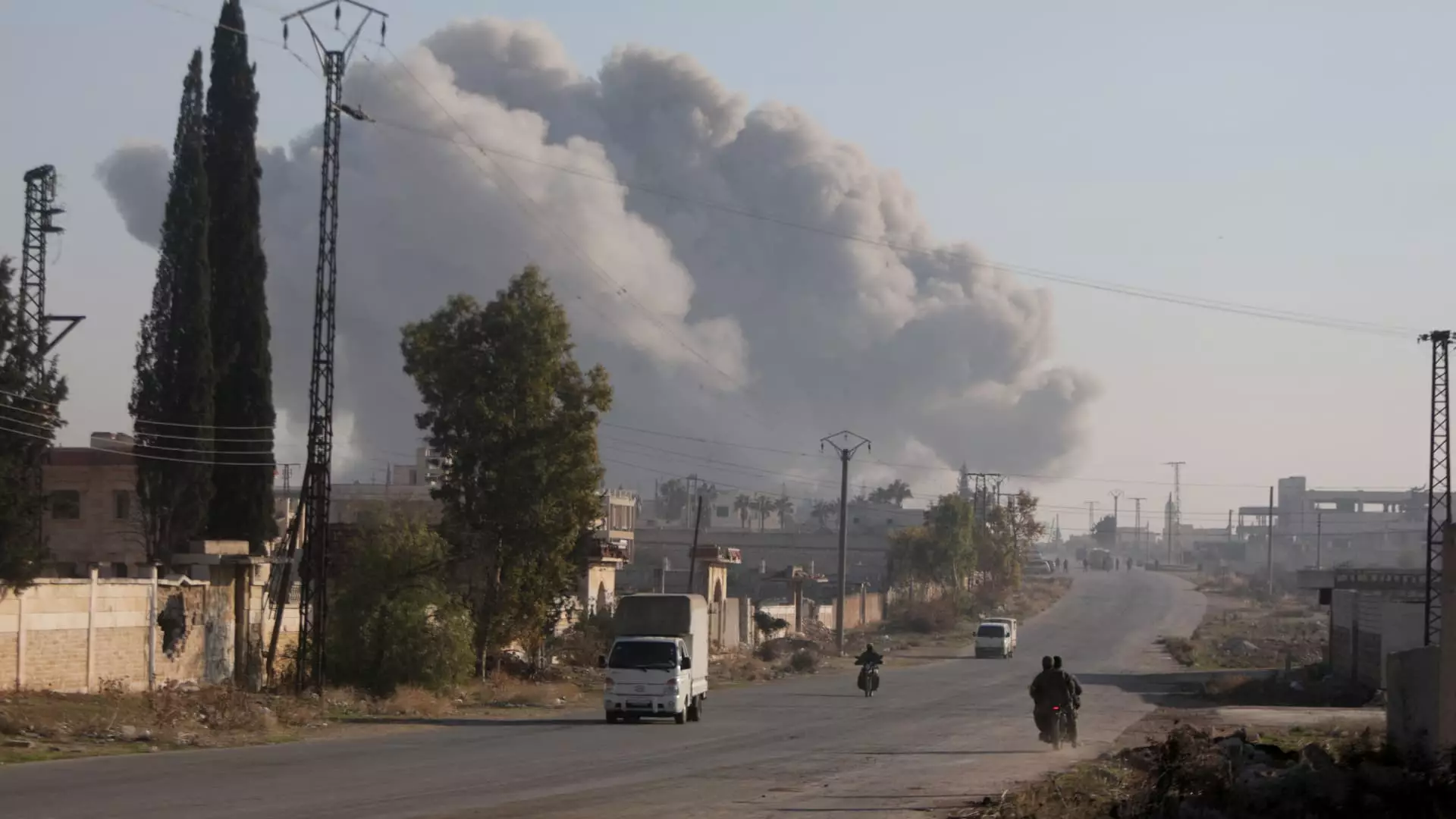In a rapid and unexpected turn of events, insurgent forces have re-engaged government troops in Syria’s largest city, Aleppo, marking a notable shift in the dynamics of the ongoing civil war. This resurgence, occurring for the first time since 2016, has sent shockwaves through a city that has endured years of conflict and suffering. The clashes ignited on a Friday and were characterized by intense gunfire and bombardments, which prompted many residents to flee in panic. According to multiple sources, including the Syrian Observatory for Human Rights, casualties have already begun to mount as both sides engage in fierce combat. This newly erupted violence emerges against the backdrop of ongoing turmoil, with other fronts flaring in Gaza and Lebanon, complicating the geopolitical landscape.
The attack on Aleppo is not an isolated incident but rather a culmination of strategic planning and opportunistic maneuvers by opposition forces in the northwestern region. Insurgents launched an unexpectedly vigorous offensive a few days prior, targeting several villages and towns surrounding Aleppo, which set the stage for the later escalation in the city itself. Eyewitness accounts from Aleppo’s neighborhoods reveal a chaotic scene, where the sounds of missiles and gunfire created an atmosphere of anxiety and fear among the local population.
The significance of this re-escalation in Aleppo cannot be understated. The Syrian government’s hold on the city, which was firmly established after years of bitter fighting and international intervention, now appears fragile. Robert Ford, the last U.S. ambassador to Syria, indicated that the recent developments expose the vulnerabilities of government forces, suggesting they may be in a state of disarray. The surge of opposition factions, primarily led by the Hayat Tahrir al-Sham (HTS), represents one of the most significant advances in recent years, making this situation even more alarming.
Adding to this chaos is the broader regional context. The Iranian-backed Hezbollah, which has been a crucial supporter of the Assad regime, is preoccupied with its battles against Israel. Concurrently, Russia seems distracted by its commitments in Ukraine, further undermining the Syrian government’s stability. Experts like Dareen Khalifa have pointed out that with these powerful allies otherwise engaged, the Syrian regime appears isolated and beleaguered, thus contributing to this unexpected uprising.
International relations within Syria are intricate and layered, characterized by shifting allegiances and a complex network of interests. Turkey has notably backed various Syrian opposition factions over the years, attempting to mediate and influence outcomes in the conflict. However, Ankara’s diplomatic efforts to mobilize a defensive front against the Syrian government’s recent assaults failed to yield results. Turkish officials noted that the initial intent of the opposition was for a “limited” advancement, aimed primarily at reclaiming territory and reinstituting some level of operational boundaries in response to provocations. Yet, the situation rapidly escalated as the regime’s lines began to crumble.
For years, Aleppo served as a battleground and a symbol of the larger struggle against President Bashar al-Assad’s rule following protests that began in 2011. The battle for Aleppo in 2016 was pivotal, marking a considerable victory for the government forces, aided by foreign allies, as they regained control of the city amidst a siege that left devastation in its wake. Presently, however, the tide seems to be turning once more, with insurgents claiming strategic victories that have reportedly led to significant territorial gains.
As the military confrontation intensifies, the humanitarian consequences become more pronounced. Reports of civilian casualties, including fatalities at student accommodations in Aleppo, signal the tragic cost of ongoing warfare. The insurgents themselves have broadcasted their use of drones, representing a new phase in this grim conflict. Such weaponry, coupled with the capture of military supplies from government forces, illustrates the adaptative strategies employed by insurgents, further complicating the landscape.
Syria’s armed forces have reportedly made claims to the contrary, stating they repelled insurgent attempts and minimizing the extent of territorial losses. However, the credibility of these assertions is questionable, given the overwhelming evidence of effective opposition actions.
As the situation in Aleppo continues to unfold, analysts remain cautious about the implications of these developments. The intricate dynamics of loyalty, allegiance, and regional politics have never been more at play. With ongoing conflicts stretching resources and attention across various fronts, the fragile peace that once characterized the Syrian landscape is once again under siege. This resurgence of hostilities in Aleppo potentially signals a new chapter in an already protracted and multifaceted civil war, introducing a host of uncertainties that may reshape the region for years to come.


Leave a Reply